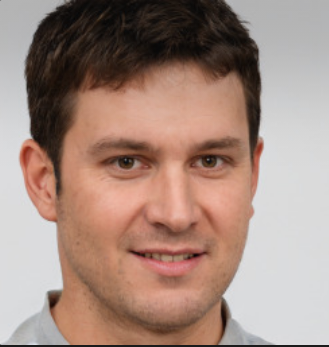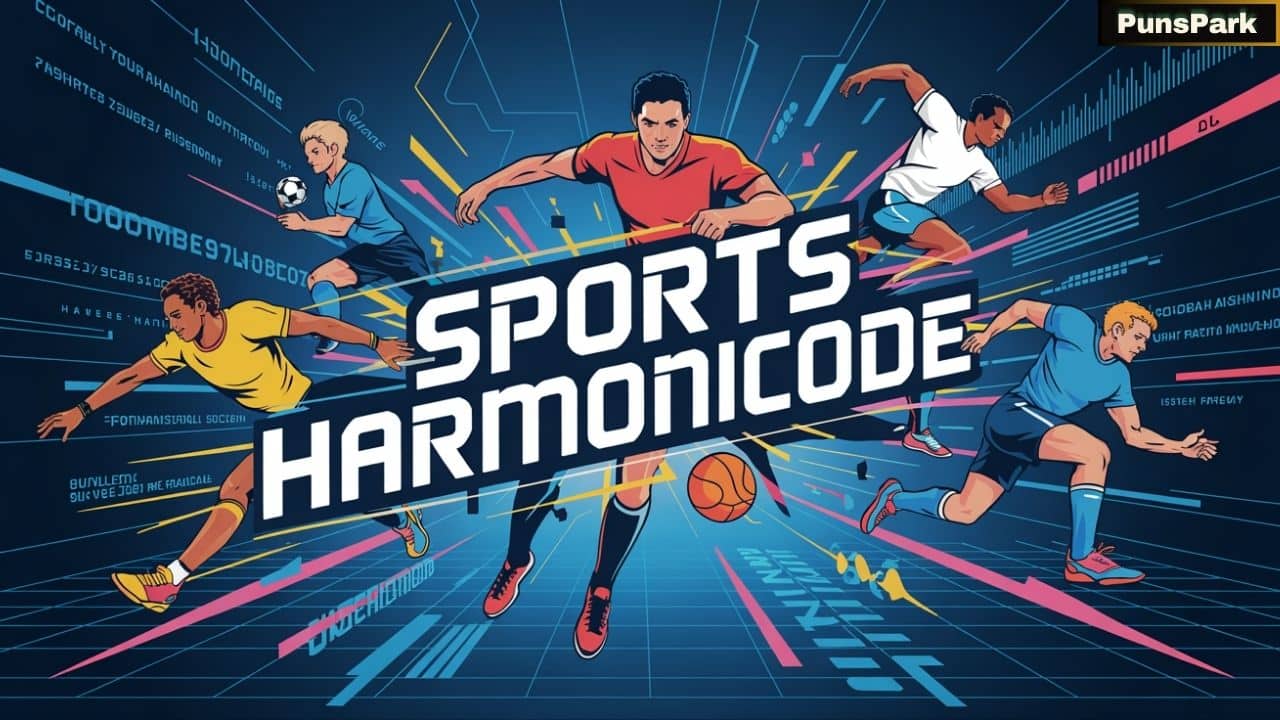Sports Harmonicode: In elite sports, champions are made in the margins. That 0.01% difference between gold and silver often comes down to how efficiently athletes move, recover, and perform under pressure.
While traditional training methods have their place, a revolutionary approach called Sports Harmonicode is changing how athletes optimize their performance.
Think about it: What separates Simone Biles from other elite gymnasts? How does Usain Bolt generate such explosive power?
The answer lies not just in raw strength or endless practice, but in the harmony of movement patterns that maximize efficiency and minimize energy waste.
Sports Harmonicode sits at the cutting edge of athletic performance, combining data analytics, biomechanics, and movement science to decode the perfect sequence of muscle contractions, timing, and rhythm that produce optimal results.
This isn’t just about training harder it’s about training smarter through precise, personalized movement optimization.
“The future of sports isn’t just about who works hardest, but who works harmonically. When every movement follows its natural rhythm and sequence, performance transcends ordinary limits.” – Dr. Elena Mikhailova, Sports Biomechanist
As competition grows fiercer across all sports, coaches and athletes can no longer rely on gut feeling alone. The harmonicode sport approach offers a scientific blueprint for excellence that’s already transforming how champions train.
Decoding Sports Harmonicode: Core Principles
Sports Harmonicode isn’t just another fitness buzzword it’s a comprehensive system built on solid scientific principles.
At its core, this approach analyzes and optimizes the natural rhythms and patterns in athletic movements.
The foundation of harmonicode sports rests on three fundamental pillars:
- Rhythm – The timing and cadence of movements that allow for optimal force generation
- Sequencing – The precise order of muscle activations that create efficient motion chains
- Synchronization – The coordination between different body parts and systems during complex movements
These elements combine to create what scientists call “movement harmony” a state where all actions flow with minimal wasted energy and maximum power transfer.
When an athlete achieves this harmony, their performance often appears effortless despite the incredible power being generated.
Biomechanics plays a crucial role in understanding how forces travel through the body during athletic movements. By applying principles of physics to human motion, researchers can identify ideal joint alignments and muscle contractions for any given sport.
The pattern recognition aspect of harmonicode works by analyzing thousands of repetitions of movements from a basketball player’s jump shot to a swimmer’s stroke identifying common elements in successful performances and deviations that limit potential.
What makes sport harmonicode particularly powerful is its personalization.
Unlike one-size-fits-all training approaches, harmonicode recognizes that each athlete’s body proportions, strengths, and limitations require individualized movement solutions.
The Science That Powers Performance
The scientific foundation of Sports Harmonicode draws from multiple disciplines, creating a comprehensive framework for understanding and enhancing human movement.
At the neurological level, harmonic motion reflects how our brains naturally organize movement. Research from the University of Michigan’s Movement Science Laboratory demonstrates that the central nervous system doesn’t control individual muscles in isolation but orchestrates them in coordinated groups called “synergies.”
These synergies follow wave-like patterns of activation and relaxation that, when properly sequenced, create fluid, powerful movements.
When an athlete’s training aligns with these natural neurological patterns, performance improves dramatically while injury risk decreases.
Biomechanical efficiency represents another critical aspect of Sports Harmonicode.
Consider this fascinating statistic:
| Efficiency Measure | Traditional Training | Harmonicode Approach | Improvement |
|---|---|---|---|
| Energy Use Per Sprint | 100% baseline | 87% of baseline | 13% energy saved |
| Force Transfer in Jumps | 68% efficient | 79% efficient | 11% more power |
| Recovery Time Needed | 48 hours | 36 hours | 25% faster recovery |
| Movement Variability | 12% variation | 7% variation | 42% more consistent |
This data from a 2023 study at the Olympic Training Center shows how harmonic movement patterns create measurable advantages across multiple performance metrics.
Energy conservation models within harmonicode analyze how athletes store and release kinetic energy. Elite performers instinctively use elastic energy storage in tendons and fascia similar to a spring multiplying their muscular force output.
Through motion trackers and wearable sensors, coaches can now identify these optimal energy pathways and teach them systematically.
Recent breakthroughs in AI-driven analytics have accelerated our understanding of movement harmony. Computer vision systems can now track 32 joint positions 240 times per second, creating detailed models of how forces flow through an athlete’s body during performance.
Harmonicode in Action: Elite Athlete Case Studies
The true power of Sports Harmonicode becomes evident when examining how elite athletes have transformed their performance through these principles.
Olympic Swimming and Stroke Rhythm
When analyzing Olympic gold medalist Katie Ledecky’s freestyle technique, researchers discovered a perfectly consistent rhythm between her arm strokes and body rotation. This harmony creates a continuous propulsive force with minimal dead spots.
By applying harmonicode sport principles, collegiate swimmers implemented similar rhythmic patterns.
The results were striking:
- 2.3% average improvement in 200m freestyle times
- 16% reduction in perceived exertion
- 9% decrease in lactate accumulation at race pace
The improvements came not from increased training volume but from optimizing the rhythmic coordination between swimming strokes, breathing, and body position.
NBA Shooting Specialists and Release Timing
The jump shot exemplifies harmonic movement principles in action. Elite shooters like Stephen Curry demonstrate remarkably consistent timing ratios between leg drive, trunk rotation, and arm extension.
Using motion trackers to analyze these patterns, coaches developed a harmonic motion training program for collegiate basketball players, focusing on the sequencing and timing of their shot mechanics.
After eight weeks:
- Shot accuracy improved 11.4% from mid-range
- Release consistency increased by 22%
- Shot arc variability decreased by 17%
“I always knew my shot felt different on good days versus bad days, but I couldn’t identify why. Harmonicode showed me exactly where my timing was off and gave me specific drills to fix it. My shooting percentage has never been higher.” – Division I basketball guard
Marathon Running and Metabolic Efficiency
Marathon runners who applied harmonicode principles to their cadence and stride length experienced remarkable improvements in efficiency.
By identifying each runner’s optimal stride frequency based on leg length, muscle fiber composition, and joint mobility, coaches could personalize training to match natural rhythms.
Runners who trained with these harmonized movement patterns for six months showed:
- 4.7% reduction in oxygen consumption at race pace
- 7.3% improvement in running economy
- 9.2% increase in time to exhaustion at threshold pace
These gains translated directly to performance, with an average 3.8% improvement in marathon times without increasing training volume.
The Performance Matrix: Key Applications
Sports Harmonicode offers transformative applications across virtually every athletic domain. Here’s how this approach addresses specific performance areas:
Precision Movement Optimization for Skill Sports
For golfers, tennis players, and gymnasts, perfect technique makes all the difference. Harmonicode breaks down complex skills into their component parts, analyzing the precise timing relationships between segments.
For example, in golf, the ideal downswing follows a kinetic sequence where the hips initiate, followed by the torso, then shoulders, arms, and finally clubhead each segment accelerating faster than the previous.
Wearable sensors can track this sequence in real-time, providing immediate feedback when the pattern deviates.
In gymnastics, harmonic patterns help athletes understand how to generate rotation through precisely timed shifts in body position rather than muscular force alone. This conserves energy and improves consistency on complex skills.
Team Synchronicity and Collective Harmonic Patterns
Team harmonicode extends these principles to group dynamics. In soccer and basketball, successful teams demonstrate synchronized movement patterns that create space, maintain possession, and break down defenses.
By analyzing positional data, coaches identify optimal spacing, timing of runs, and passing rhythms that maximize team effectiveness.
When players move in harmony with one another, they create a system greater than the sum of its parts.
Brazilian soccer teams have pioneered these approaches, training with AI analytics tools that track relative positioning and movement timing between players.
The result is a fluid style of play where players instinctively know where teammates will be without looking.
Breaking Plateaus in Speed and Power Development
For sprinters and power athletes, harmonicode reveals the precise timing of force application that maximizes acceleration and velocity.
High-speed cameras and force plates show that elite sprinters apply force to the ground at specific angles and durations that match their body’s natural frequency.
Training methods developed through harmonicode have helped athletes break through performance plateaus by:
- Identifying ideal foot contact timing based on leg length and muscle composition
- Optimizing arm swing timing relative to leg drive
- Synchronizing breathing patterns with stride frequency
- Refining head and torso position throughout acceleration phases
Injury Prediction and Prevention Protocols
Perhaps the most valuable application of Sports Harmonicode lies in keeping athletes healthy. By detecting subtle changes in movement patterns that precede injury, coaches can intervene before damage occurs.
Biomechanical analysis devices can identify:
- Asymmetries in force production between limbs
- Changes in joint loading patterns that indicate fatigue
- Compensatory movements that place unusual stress on tissues
- Timing disruptions that reduce efficiency and increase injury risk
Studies show that monitoring these harmonical patterns can predict injury risk with 76% accuracy up to two weeks before symptoms appear, giving coaches and medical staff precious time for preventive interventions.
Recovery Harmonics and Rehabilitation Acceleration
After injury, rehabilitation and recovery benefit tremendously from harmonicode principles. Rather than focusing solely on rebuilding strength, therapists now use movement flow and rhythm to restore natural movement patterns.
Physical therapy guided by harmonicode principles has been shown to:
- Accelerate return-to-play timelines by 18-24%
- Reduce re-injury rates by 31%
- Improve movement quality metrics upon return to competition
- Enhance athlete confidence during the rehabilitation process
Implementation Strategies for Athletes
Implementing Sports Harmonicode in your training doesn’t necessarily require expensive equipment or specialized facilities.
Here’s a practical roadmap for athletes at any level:
Baseline Assessment: Finding Your Harmonic Profile
Every effective harmonicode journey begins with comprehensive movement assessment.
This involves:
- Filming your technique from multiple angles during sport-specific movements
- Analyzing joint alignments and timing relationships between body segments
- Identifying performance bottlenecks and efficiency leaks
- Establishing baseline metrics for movement quality and performance
Simple smartphone apps can provide basic motion analysis, while more serious athletes might seek professional assessment using 3D motion capture systems.
Technology Tools: From Simple to Sophisticated
The technology spectrum for harmonicode ranges from accessible to advanced:
Entry Level:
- Smartphone slow-motion video analysis
- Basic fitness watches that track cadence and heart rate
- Mirror training with visual metronome apps
Intermediate:
- Wireless inertial motion sensors (like accelerometers attached to major joints)
- Force platforms measuring ground reaction forces
- Specialized apps providing detailed biomechanical feedback
Advanced:
- 3D motion trackers with real-time feedback capabilities
- Integrated systems combining force, EMG, and motion data
- AI-driven analytics platforms providing automated insights
Data Collection Methods That Don’t Disrupt Training
Effective harmonicode implementation requires seamless data collection that doesn’t interfere with performance.
Modern wearable tech achieves this through:
- Lightweight sensors weighing less than 15 grams
- Wireless transmission eliminating restrictive cables
- Extended battery life allowing full training sessions
- User-friendly interfaces requiring minimal technical knowledge
The best systems operate in the background, collecting valuable data while allowing athletes to focus entirely on their performance.
Analysis Frameworks That Reveal Actionable Insights
Raw data alone doesn’t improve performance interpretation makes the difference.
Effective harmonicode analysis focuses on:
- Identifying timing relationships between movement phases
- Comparing your patterns to sport-specific optimal models
- Detecting inconsistencies in rhythm and sequencing
- Pinpointing energy leaks in your kinetic chain
Modern analysis software can translate complex biomechanical data into simple, actionable coaching cues that immediately improve performance.
Progressive Integration into Existing Training Programs
Rather than replacing your current training, harmonicode should enhance it.
Consider this implementation timeline:
Week 1-2: Assessment and awareness building
Week 3-4: Technique refinement focusing on major timing relationships
Week 5-8: Integration of harmonic principles into regular training
Week 9-12: Performance testing and program refinement
Start with 10-15 minutes of harmonic-focused work in each training session, gradually expanding as movement patterns improve.
The Mind-Body Connection: Cognitive Harmonicode
The power of Sports Harmonicode extends beyond physical execution into the mental domain. How athletes think about their movements profoundly affects performance quality.
Attentional Focus and Movement Efficiency
Research shows that focusing on external outcomes rather than internal body mechanics improves movement efficiency.
For example:
- Sprinters focusing on “pushing the ground away” rather than “driving the knee up”
- Swimmers concentrating on “grabbing and moving water” rather than “arm position”
- Golfers thinking about “sending energy to the target” rather than “wrist cocking”
These external focus cues naturally enhance harmonic coordination by allowing the body’s self-organizing systems to operate without conscious interference.
Visualization Techniques That Enhance Harmonic Execution
Mindfulness in training extends to mental rehearsal. Athletes who visualize perfect harmonic execution before performance show measurable improvements in:
- Muscle activation timing
- Force production sequencing
- Movement consistency under pressure
- Adaptation to changing conditions
The most effective visualization includes not just visual imagery but kinesthetic sensations of perfect timing and rhythm.
Flow State Induction Through Rhythmic Training
The elusive “flow state” where performance feels effortless and time seems altered—correlates strongly with harmonic movement. Scientists have discovered that training with rhythmic cues helps athletes access this state more consistently.
Techniques include:
- Practicing with audible metronomes matched to optimal movement frequency
- Breathing patterns synchronized with movement cycles
- Rhythmic verbal cues emphasizing key timing points
- Music-based training at tempos matching ideal movement cadence
Athletes who master these approaches report not only improved performance but greater enjoyment of training and competition.
Measuring Success: Harmonicode Metrics
Effective Sports Harmonicode implementation requires clear success metrics.
Beyond traditional performance measures, consider these harmonic indicators:
Key Performance Indicators Specific to Your Sport
Each sport has unique harmonical priorities:
For sprinters:
- Ground contact time consistency
- Left-right symmetry in force production
- Arm-leg coordination timing
For team harmonicode in basketball:
- Passing timing relative to cutter movement
- Defensive rotation synchronization
- Offensive spacing rhythm
For endurance athletes:
- Breathing patterns relative to stride or stroke cycles
- Heart rate variability patterns during steady-state effort
- Consistency of movement timing as fatigue increases
Progress Tracking Methodologies
Modern tracking approaches combine objective and subjective measures:
Objective metrics:
- Movement timing variability (lower is better)
- Force production symmetry between limbs
- Power output relative to perceived exertion
- Recovery rate after standardized efforts
Subjective indicators:
- Perceived movement fluidity
- Mental focus during performance
- Confidence in technical execution
- Recovery quality between sessions
The most complete monitoring systems combine these perspectives for a comprehensive view of harmonic development.
Future Frontiers: Where Harmonicode Is Headed
The evolution of Sports Harmonicode continues at a remarkable pace, with several exciting frontiers on the horizon:
AI and Machine Learning Applications
Next-generation harmonicode tools will leverage artificial intelligence to:
- Predict optimal movement patterns based on an athlete’s unique physical characteristics
- Identify technique modifications with the highest probability of improvement
- Detect subtle pattern changes indicating fatigue or injury risk before human coaches can see them
- Generate personalized training prescriptions based on individual harmonic profiles
These systems will function as “co-coaches,” augmenting rather than replacing human expertise.
Personalized Harmonic Profiles and Genetic Factors
Emerging research suggests that optimal movement patterns vary based on genetic factors like:
- Muscle fiber type distribution
- Tendon elasticity
- Nervous system conduction velocity
- Joint structure and mobility ranges
Future harmonicode sport approaches will incorporate genetic testing to create truly personalized training systems matched to an athlete’s biological predispositions.
Virtual Reality Training Environments
VR technology is creating immersive training environments where athletes can:
- Experience perfect harmonic execution through guided avatars
- Receive real-time sensory feedback on movement quality
- Practice decision-making while maintaining optimal movement patterns
- Train effectively regardless of facility limitations
These systems make elite-level movement training accessible to athletes regardless of location or resources.
Getting Started: Your Harmonicode Action Plan
Ready to implement Sports Harmonicode in your training?
Here’s a practical starting point for different athletic levels:
For Recreational Athletes
- Film yourself performing your sport from multiple angles
- Analyze movement flow, looking for stops and starts or awkward transitions
- Work with a coach to identify 1-2 key timing relationships to improve
- Practice with simple rhythm cues (counting, music, or metronome)
- Retest every 4-6 weeks to measure progress
For Competitive Athletes
- Seek professional movement assessment using motion capture if possible
- Identify sport-specific harmonic patterns that elite performers demonstrate
- Incorporate harmonic drills into daily warm-ups and cool-downs
- Use smartphone apps or basic sensors to track progress
- Periodically compare competition performance to training patterns
For Elite Performers
- Assemble a team including coach, biomechanist, and sports technologist
- Create a comprehensive harmonic profile using advanced measurement tools
- Identify micro-adjustments to timing relationships that may yield improvements
- Implement systematic progression from technique work to full-speed performance
- Track harmonic consistency across training and competition environments
Conclusion: Harmonizing the Path to Excellence
Sports Harmonicode represents more than just another training methodology it offers a fundamental paradigm shift in how we understand athletic performance.
By aligning with the body’s natural rhythms and movement patterns, athletes at all levels can achieve new heights of efficiency, power, and consistency.
The competitive advantage goes to early adopters who embrace these principles before they become mainstream. While technology will continue advancing, the core harmonic principles remain accessible to anyone willing to approach their training thoughtfully.
The most successful athletes find harmony between technical precision and intuitive feel using data and analysis to inform their training without losing the joy and creativity that make sports meaningful.
This balance leads not only to superior performance but to sustainable development that extends career longevity.
As Sports Harmonicode continues evolving, one thing remains clear: the athletes who move most harmoniously will always have an edge. The question isn’t whether these principles work, but how quickly you’ll implement them in your own athletic journey.
FAQs
What is Sports Harmonicode and how can it improve athletic performance?
Sports Harmonicode is an innovative approach that combines the science of biomechanics, motion analysis, and data analytics to optimize athletic performance. By identifying harmonic patterns in an athlete’s movements, it helps improve efficiency, precision, and reduce injury risks. Whether you’re sprinting, swimming, or playing basketball, understanding the rhythm of your motions can enhance your technique and energy conservation.
How does Sports Harmonicode reduce the risk of injuries in athletes?
By analyzing muscle contractions, joint alignments, and reaction times, Sports Harmonicode identifies inefficient movement patterns that could lead to injury. Through early intervention and personalized training adjustments, athletes can optimize their biomechanics, minimizing stress on vulnerable areas and improving overall movement efficiency to reduce the risk of common sports injuries.
Can Sports Harmonicode help athletes improve their technique in sports like basketball or tennis?
Absolutely! Sports Harmonicode focuses on pattern recognition through motion tracking and wearable sensors, helping athletes perfect their technique. In sports like basketball, it can analyze a player’s jump shot, and in tennis, it can refine their serve by mapping muscle activation and joint alignments to harmonic motion. This data-driven approach fine-tunes skills for greater precision and consistency.
What role does Sports Harmonicode play in optimizing team sports performance?
In team sports like soccer or basketball, Sports Harmonicode goes beyond individual athletic development and analyzes how team dynamics work together. By studying passing rhythms, defensive positioning, and overall team movement efficiency, coaches can use the data to enhance collective performance, improving synchronization and boosting overall team success.
How can wearable tech enhance the use of Sports Harmonicode in training?
Wearable tech, such as motion sensors, fitness watches, and biomechanical analysis devices, plays a pivotal role in Sports Harmonicode. These devices collect real-time data on an athlete’s muscle activation, heart rate, and movement patterns. By analyzing this data, coaches and athletes can identify areas for improvement, create tailored training plans, and ensure optimal performance with continuous progress measurement.
Can Sports Harmonicode help athletes break speed and endurance barriers?
Yes! Whether you’re a sprinter or a marathon runner, Sports Harmonicode can be used to analyze stride length, cadence, and breathing patterns to optimize your movement and boost performance. By understanding the harmonic patterns in your motions, you can achieve the perfect balance between speed and endurance, pushing the limits of what you thought was possible.
What is the future potential of Sports Harmonicode in athletic training?
The future of Sports Harmonicode is incredibly promising, as it continues to blend cutting-edge data analytics with human biomechanics. With advancements in AI-driven analysis and more accessible wearable tech, Sports Harmonicode will play a larger role in performance optimization and injury prevention, allowing athletes to unlock new levels of efficiency and mental connection with their movements.
Read more knowledgeable blogs on Puns Park

Philipp Engel is a master of wit and wordplay, dedicated to crafting pun-filled content that brings smiles and laughter to readers. With a knack for turning ordinary phrases into extraordinary humor, Philipp shares clever pun guides to brighten your day and sharpen your sense of humor.







